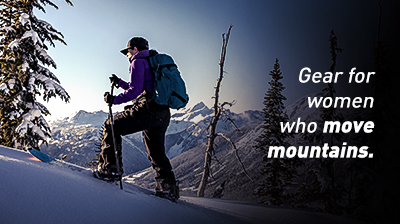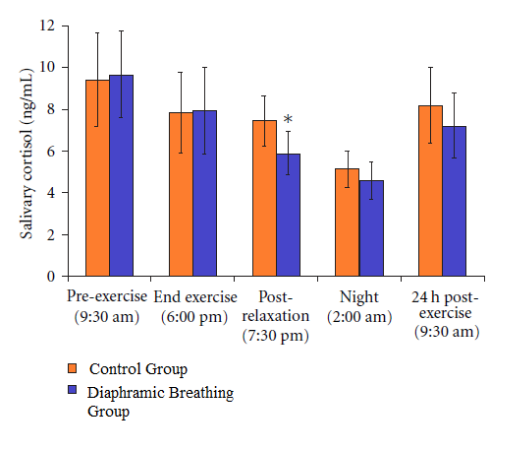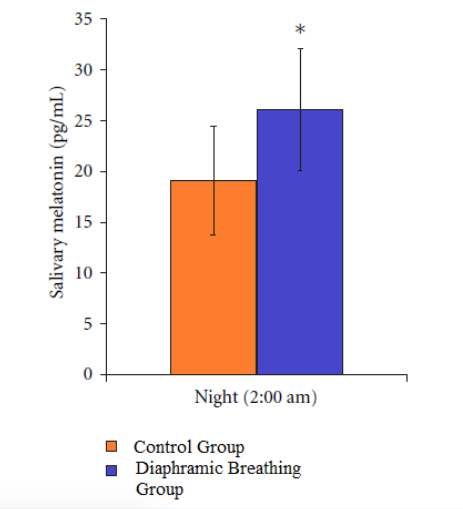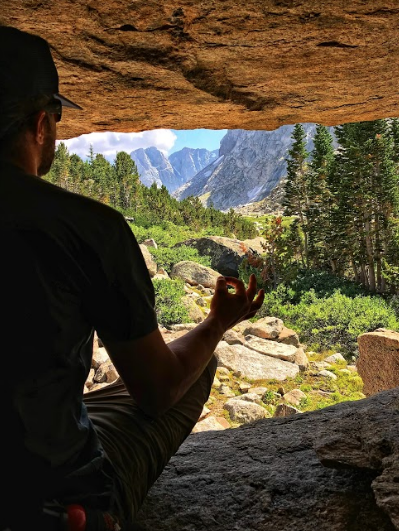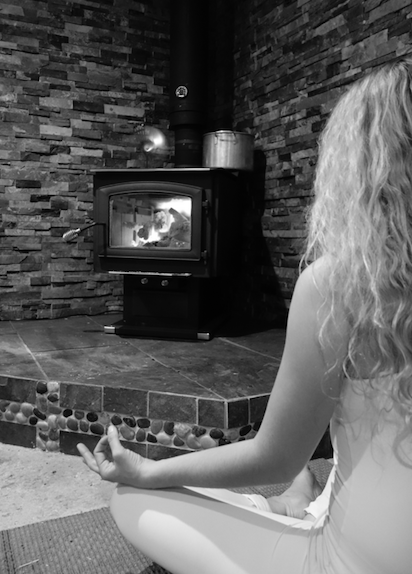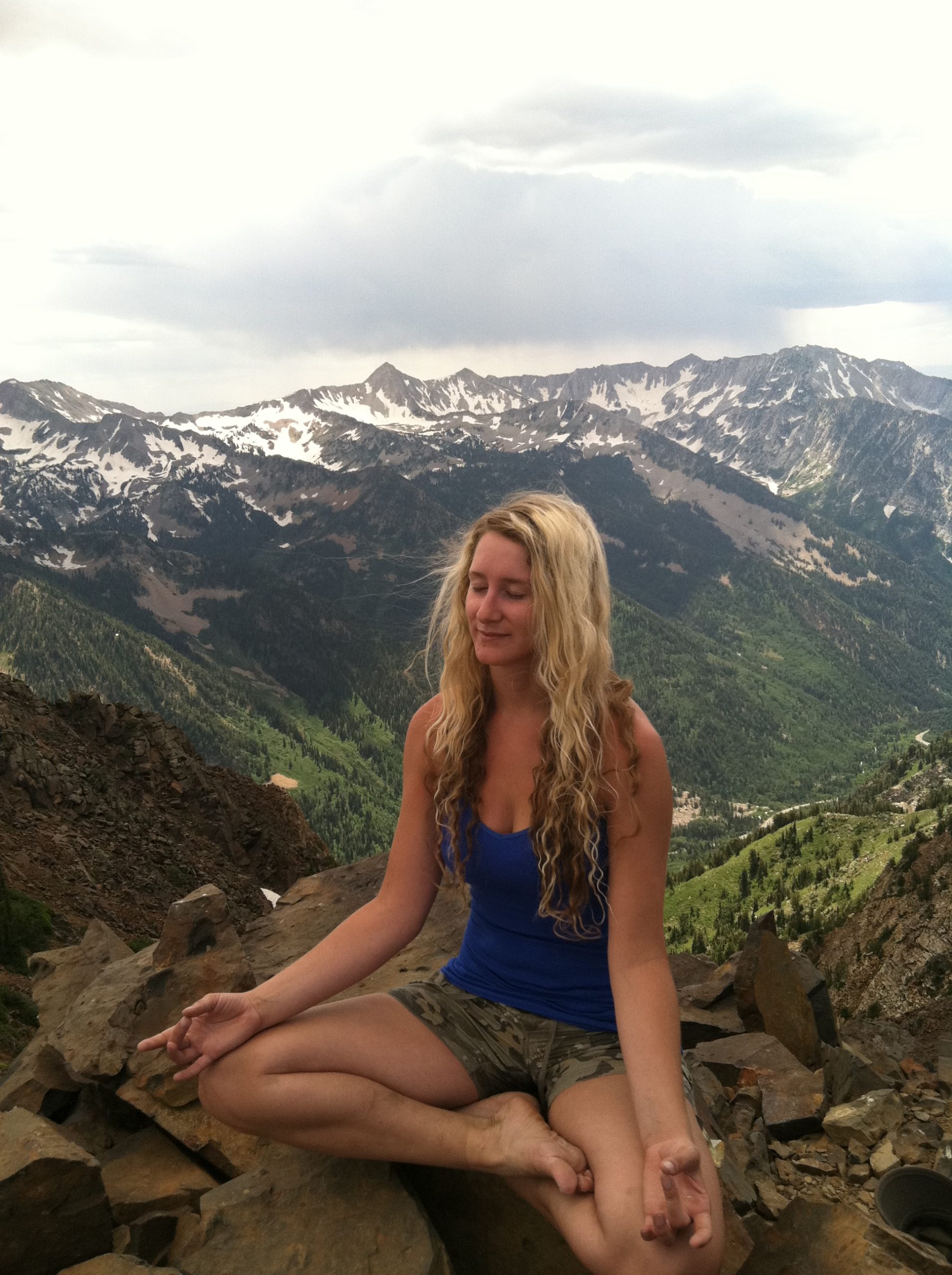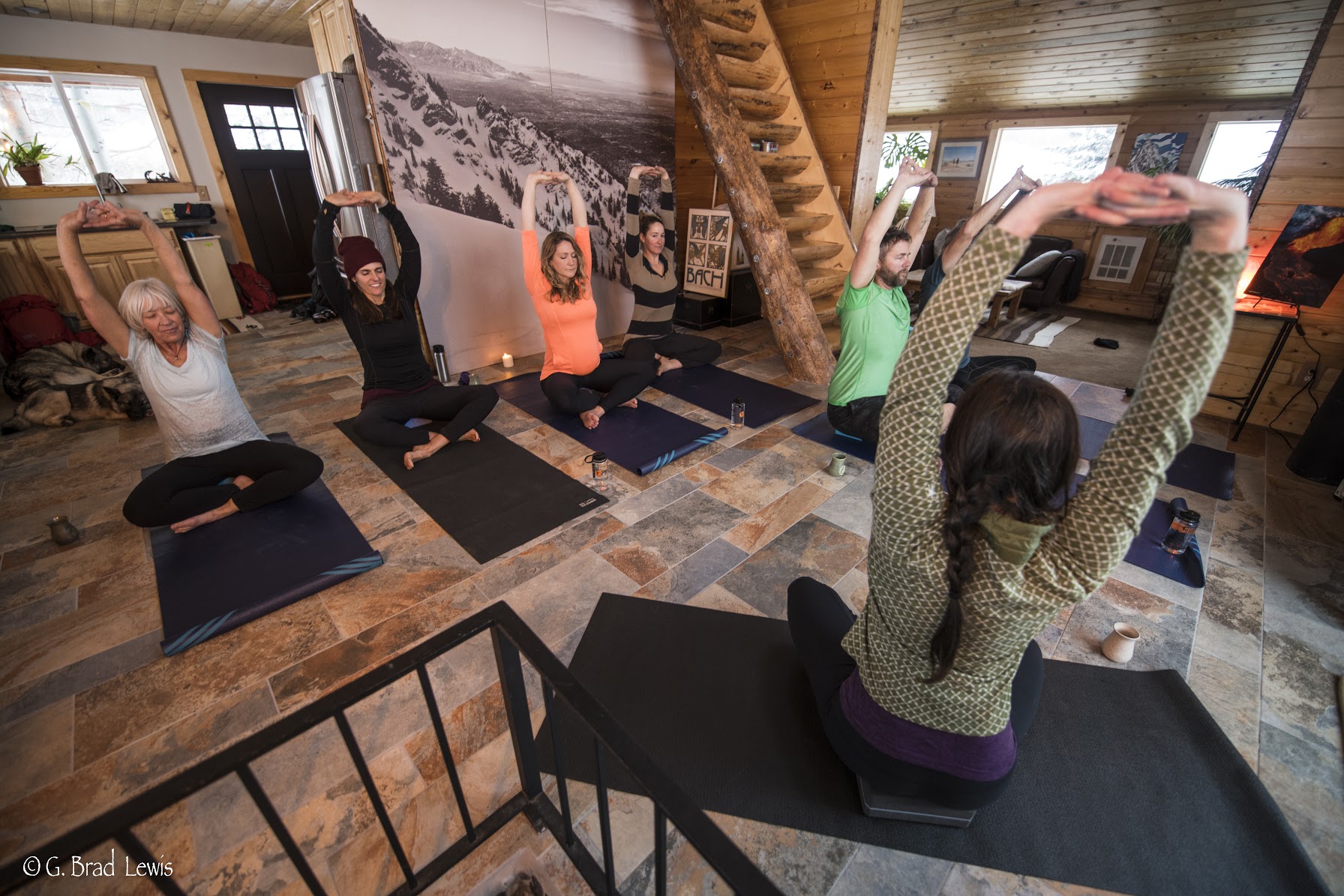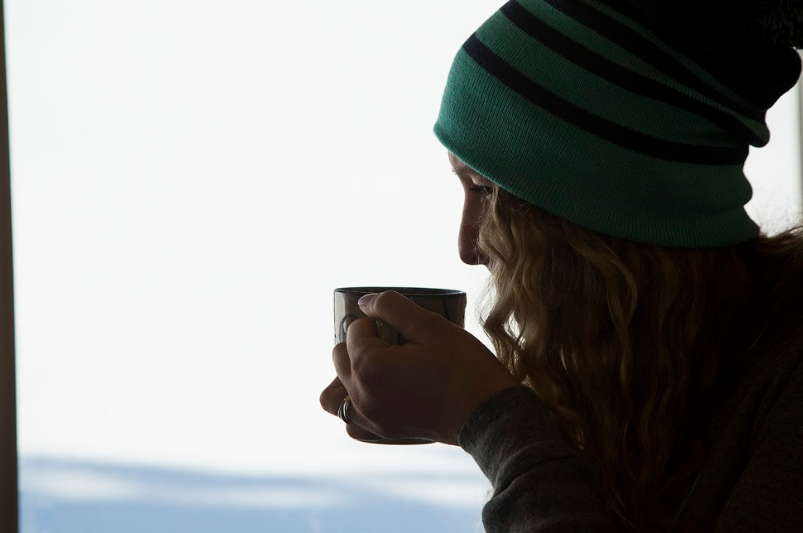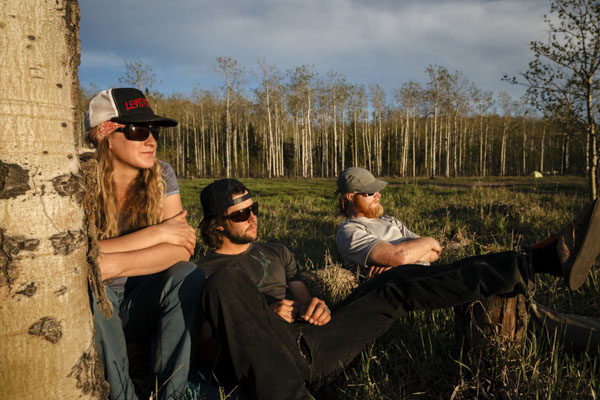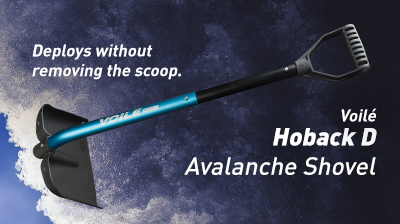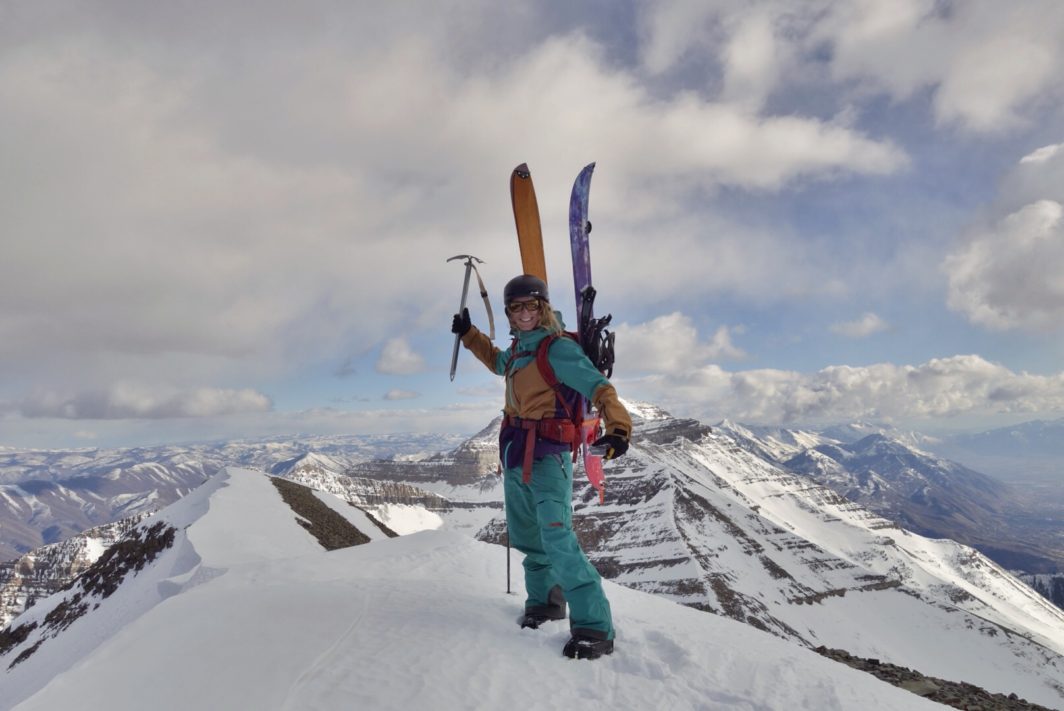
Meditations to Enhance Your Mountaineering Experience
Share this Post
Meditation and mountaineering are more connected than you may think. When I am climbing mountains on my splitboard, I’ve realized that my attitude and thoughts influence how far and how fast I can go. I also notice how much better I feel after taking the time to meditate before and/or after a day of peak bagging. Exploring the validity of meditation, visualization, and breath work has been fascinating me for more than a decade. But what I find really interesting is how it affects successfully climbing mountains, the influence it has on recovery, and if it can determine how much endurance I have. As a yoga teacher and professional snow slasher with a drive towards rugged mountains, I’m honored to share this fascination with you.
Meditation was intended as a spiritual practice for monks and nuns as a way to tap into a deeper understanding of the human to the divine. When we practice meditation we learn to momentarily detach from the environment so that we can channel our focus to one point. The consistent chatter of the mind fades out of our awareness and the only thing left is the present moment. Eventually, this ability to focus the mind eases our superficial suffering caused by our attachment to how we thought things should be. We start to learn to accept things as they are. Mountaineering is also known to sever this attachment because it requires us to be in-tune and focused. We aren’t able to think about how a trivial life situation should be while also riding a committing line. Our survival instinct requires us to focus and the result is a pure, in-the-moment-flow, that many of us come back to the mountains for over and over. Commonalities between meditation and splitboard mountaineering align in the subtleties.
Observe and Choose
Basic meditation is simply learning to observe our thoughts and become aware. By learning to observe rather than react, we are enabled to choose which thoughts we want to react to and which ones to let go. We can then make informed decisions about our environment and monitor our emotional attachments. You can achieve this by simply sitting with yourself and paying attention to your own thought pathways.
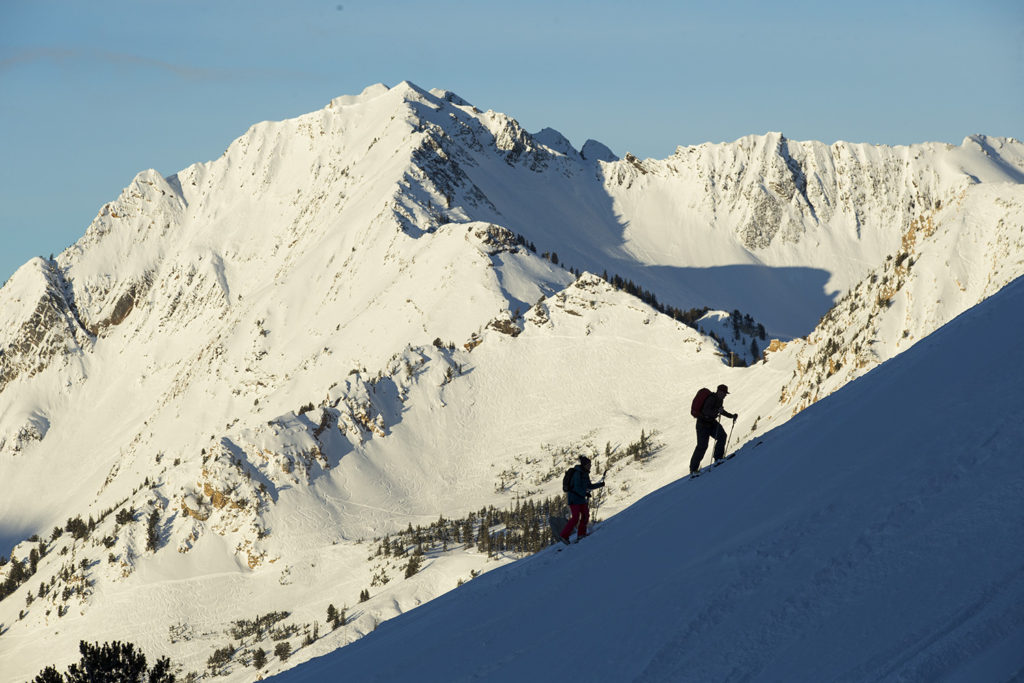
Positive Mental Imagery
Many have experienced this behind the scenes, professional skier & worldwide mountaineer, Andrew McLean said, “ I do firmly believe in positive mental imagery – you have to see yourself succeeding.” From the book, Mountaineering: The Freedom of the Hills, the author offers us this truth: “Morale is intangible, but it makes a party stronger. Morale is often the deciding factor in party’s success, and it is always the deciding factor in making the climb enjoyable. Morale is everybody’s job.” We ultimately have complete control of our moral and it contributes to the group dynamic immensely. The challenge is in accepting full responsibility for it and meditation is a way to gain that skill.
Mantras
Mantras are statements, that when repeated over and over, help us hold a specific thought in the mind. I have found mantras boost my moral and positive mental imagery. If we choose to hold thoughts like, “this hurts,” “I’m beat,” “I can’t go on,” then we will create that result for ourselves. On the other hand, “this is making me stronger,” “I’m so thankful I have opportunity to do this,” “I will get there,” or one of my favorites, “it is what it is,” then that becomes our reality and that vibe contributes to our success. Meditation is training our minds to monitor and realize these pathways.
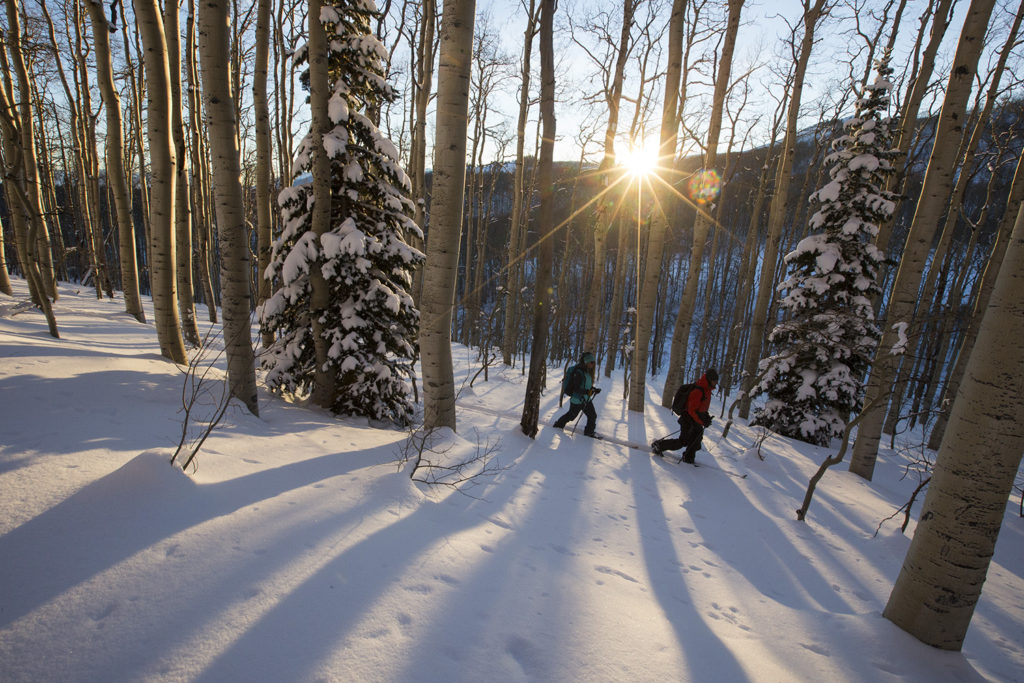
Suffer-fest
Life is suffering- one of Buddhism’s four noble truths. More applicably, splitboarding up a huge mountain with intent to ride it doesn’t happen without a fair amount of endurance suffering. Some expeditions can even be deemed a “suffer-fest” and we put ourselves through grueling long hours to achieve the summit we’ve appointed as a worthy accomplishment. Even when it is intense and painful we push on. When we exercise at this level our bodies make all kinds of extra chemicals. It is in this chemical response that we can scientifically prove the benefits meditation can offer a splitboard mountaineer.
The Science Behind the Psyche
While climbing we burn up oxygen faster producing more oxidative stress on our cells with the chemical cortisol. Our ph levels also become more acidic, according to a study out of Washington University. Obviously, this is not the only thing happening in our bodies; otherwise no one would exercise willingly. There is enjoyment that comes from the “suffer-fest”; some sort of strange pleasure. One aspect of this pleasure comes from a chemical called dopamine. Our bodies make dopamine and endorphins as we exercise and these chemicals usually result in feeling good. Depending on how a person’s chemical stew is on a base level, these feel good chemicals can even become addicting and contribute to their drive to stay active.
After a long day on the mountain our bodies also make recovery chemical called melatonin. According to a Study conducted by the Department of Experimental Medicine and Public Health at the University of Camerino, you can help increase your gusto in the hills with meditation because it creates more of the chemical melatonin. Simply by looking into the work of Wim Hoff, many of these points are now verified through science.
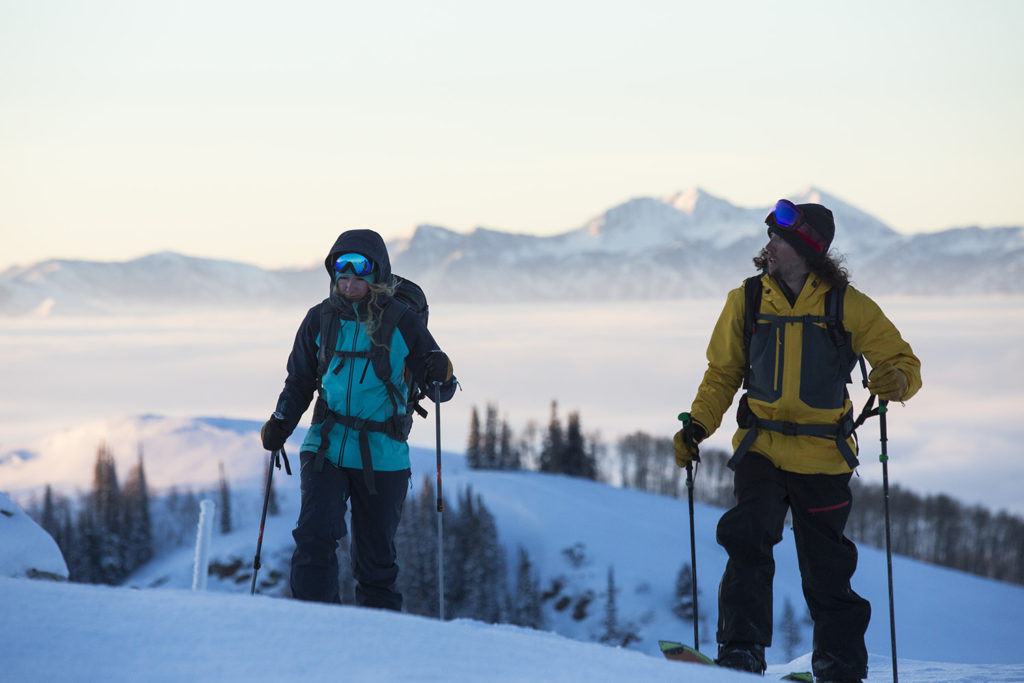
Post-ride Melatonin
In the UC study, 16 athletes where put into two groups. Both groups went through an intense 8-hour mountain bike ride. After the ride, tests were taken to record everyone’s exercise-induced oxidative stress levels. Oxidative stress is a condition where there is an increase of oxidation in cells, along with the production of the chemical cortisol, they cause free radicals that degenerate the cells.
Afterwards, one group did a deep diaphramic breathing meditation while the other group simply relaxed; both in similar rooms. After an hour they were tested again. Here are their findings; (graph 1)
The melatonin that we make is a hormone produced in order to relax and it is also an antioxidant that counteracts oxidative stress. By decreasing cortisol levels and increasing melatonin, the meditation exercise seemed to prevent oxidative damage from taking hold. Meditation also increased the oxygen intake in their blood streams. This occurs because of the deep breathing practiced in all meditation modalities. More oxygen in the blood stream makes for more readily available energy supplies. If we use meditation to train our bodies response to stress, then we can get up the next day and go further.
Therefore, I encourage using meditation as a tool in order to increase our suffering thresholds. Meditation can be simple. What is more simple then to stop, breathe, and focus? There is also staggering amount of meditation variations. Visualization, contemplation, deep breath work, yoga asana, and even encouraging mantras are just a few options that may help increase your endurance. Any type can help to combat all the stress we put ourselves through by pushing our physical limits and achieving our lofty goals. This beautiful and ancient practice can make us healthier, more focused, and we may even learn more about ourselves as a result.
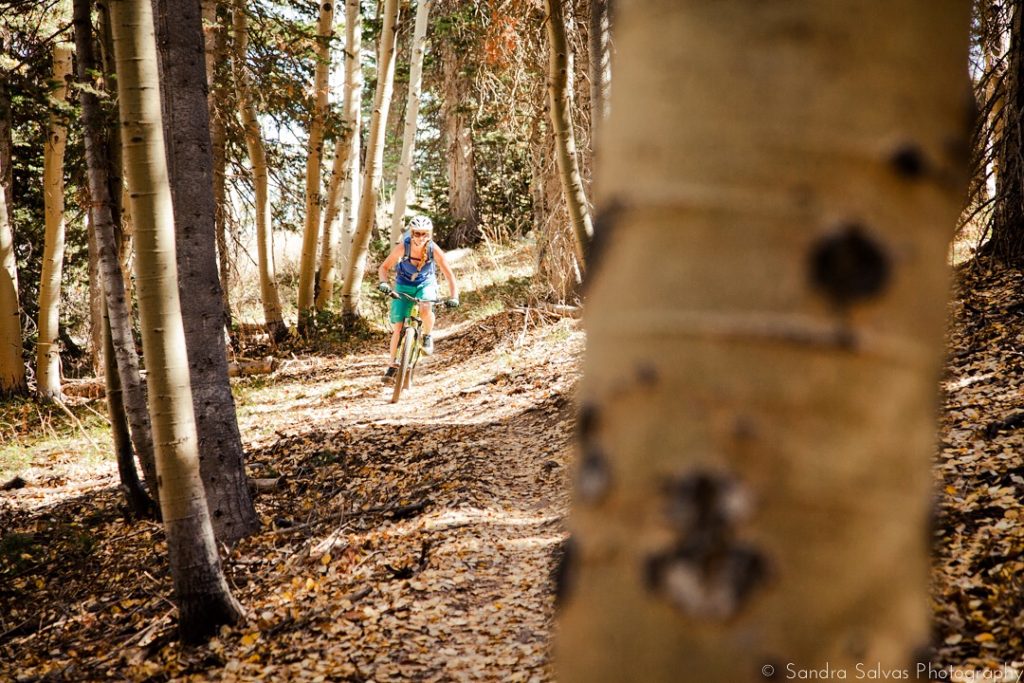
12 Steps to Help Facilitate Meditation
1. Set aside a special place away from everyone, or with everyone, depending on your group dynamic. How you set up this space will help with concentration. This place will eventually develop an aura of its own that helps facilitate meditation. I have a special alter space in my home. When I’m not at home, I like to find flat rocks, make a bench in the snow with my splitboard, take my closed cell pad to a place with a view, or just sit in my tent. Remember, simple is key.
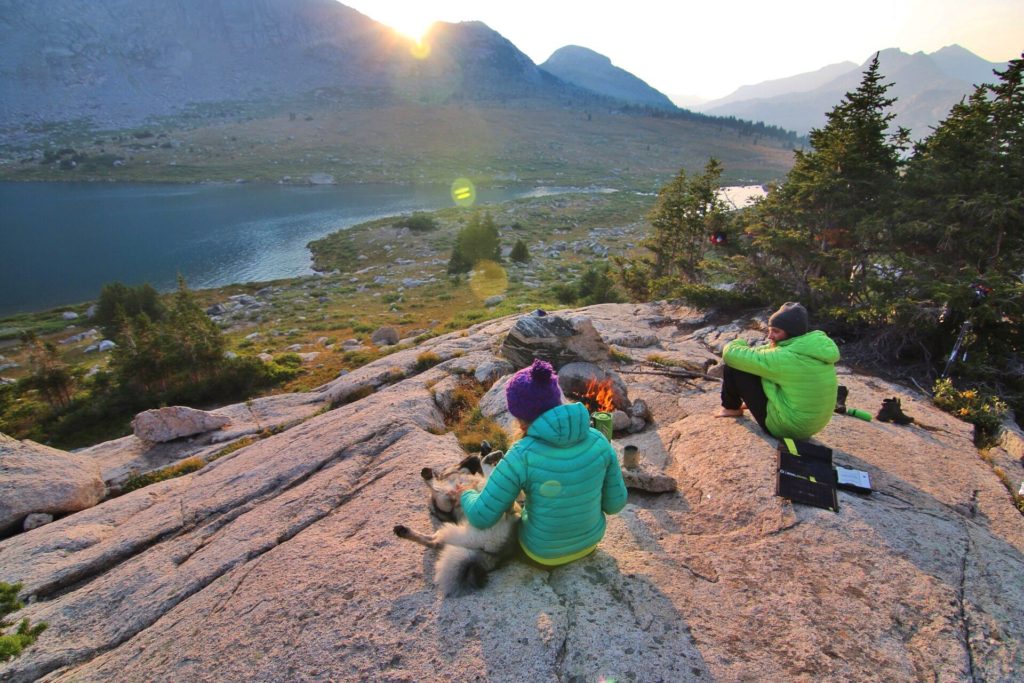
2. Pick a time when your mind can be free. Dawn or dusk is can be nice because of the calm energy level. Using the same time and place each day helps the mind to calm more quickly. I prefer dusk because it won’t interfere with dawn patrol missions. On recovery days I love to sit in the dawn light as it comes over the horizon. No matter the time of day, creating a time where you won’t be disturbed will help you keep your focus.
3. Sit with your back straight in line with your neck and head. Proper alignment will help you stay focused and eventually help your general posture.
4. Pick a direction. (North & east are the positive poles of the earth, and so they may be good choices.)
5. Suggest to the mind that, it is time to slow down and rest the soul.
6. Slow and deepen the breath.
7. Now let it go and let the body find a natural rhythm.
8. Let the mind wander at first. After a time, step back from engaging with the thoughts and just observe them. It’s like your thoughts are just sweeping by on their own or like birds flying past in the sky.
9. Eventually, bring the mind on to a focal point. Keeping your focus on your breath or gazing into a flame works well. If the mind wanders from your focus, don’t be forceful, don’t engage with shame, just notice and bring it back gently.
10. Meditation is a process not a destination: when you reach a state of full awareness and your sensitivity enhances you will notice.
11. Eventually, duality disappears and samati (unity of the mind, body and soul) will come to be.
12. This won’t happen by trying, by doing anything. Don’t aspire to anything in particular happening; just let it be. The more you do it, the more awareness you cultivate, the smoother your mind becomes, and if nothing else you have more oxygen in your blood than when you started.
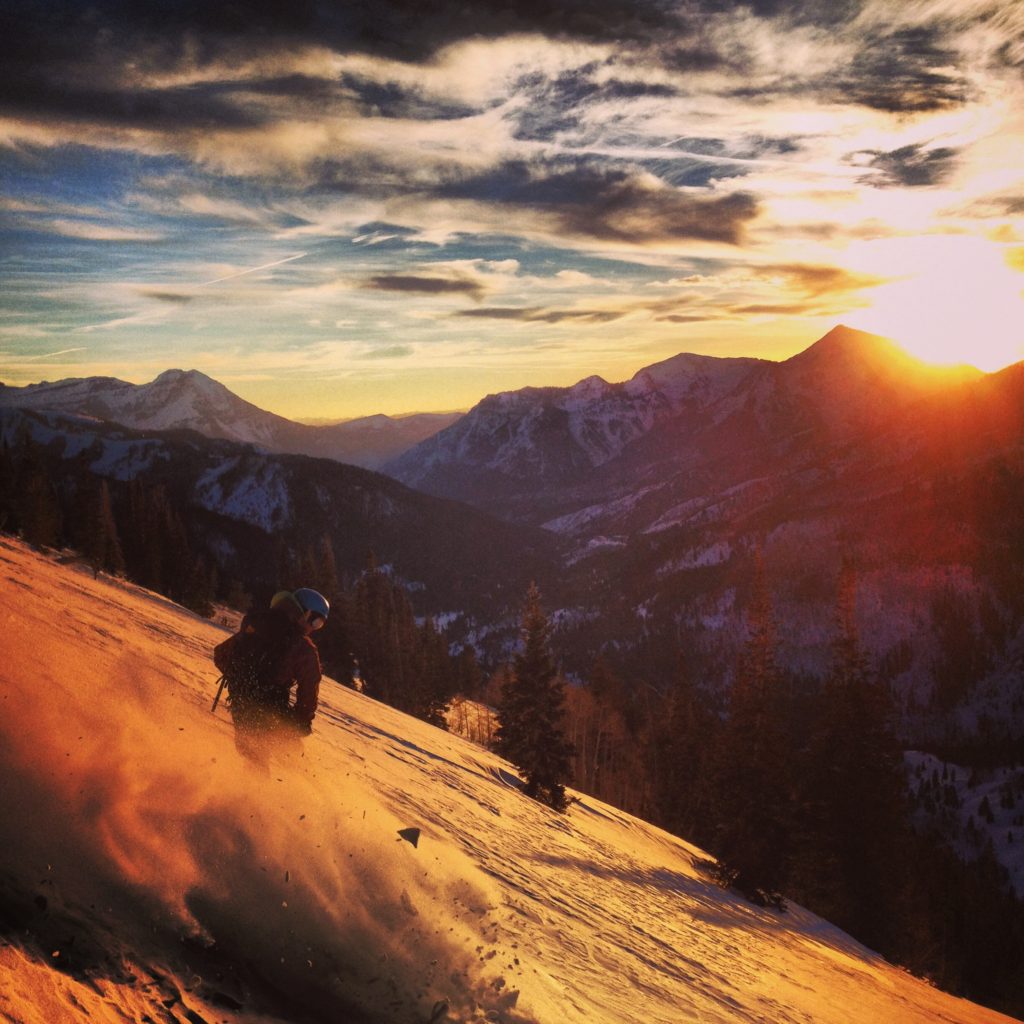
Suggested 15 Minute Meditations
15 Minute So-Hum
Start seated in a comfortable position. “Perfect Pose” has a nice feel to it. You sit in Lotus position and then bring your bottom leg so it touches your other thigh and bring the top of your foot into the crease in your bent leg.
Bring your attention to the breath and just simply notice it.
Start to inhale “So” and exhale “Hum.” SoHum means “I am that.” Connect with yourself. Don’t attach to any thoughts or preconceptions of who you think you are. Just be.
15 Minute Four-Part Breathing
Start sitting comfortably- any way that feels good. Even lying down in Savasana is very beneficial. Laying with our backs flat gives the vertebrae in our spines a chance to reabsorb the water that gets lost throughout the day.
Bring your awareness to your breath.
Start to breathe in a four sided box shape. Breathe in for 10 seconds; hold in for 5; out for 10; hold out for 5. This can be any combination of time you like, some people prefer 4 seconds on all 4 sides because its simple. Whatever timing you choose, continue to flow with this breath. If you get distracted by a thought or an impulse, acknowledge it without judgment and come back to your box breath.
15 Minute Slow Hands
With slow and even breaths, sit comfortably and shake out your hands. Bring your hands to your thighs and notice the sensation of your pulse in your fingers.
Start to breath into your belly filling it up. As you are inhaling, imagine a bright light emanating from your core or solar plexus chakra. As you exhale the light gets dimmer and brighter on the inhale pulsing with breath.
Very slowly, start to bring your palms to face each other. Notice any sensation of the movement. See the light that was in you core, as a ball in between your hands. Pulse your hands slowly and feel the sensation of the light.
Now imagine the ball is the earth and the light from your breath is healing energy. Heal the world as you hold this light around it.
15 Minute Air
Stand in Tadasana, Mountain Pose, with your eyes closed. Breath in as if your whole core, chest, and shoulders are an empty vase. Filling it up from the bottom up, belly, ribs, chest, shoulders, and head.
As you are breathing imagine you are at the bottom of the ocean standing in Tadasana and breathing freely. Feel your arms- is there an undulation as the tide comes in and goes out?
This ocean you are used to imagining as water is the vary ocean of air that we live in everyday. It is our collective womb, it sustains us and gives us life.
Curious about Cindi’s lifestyle and other guided adventures like Hotspring Paddleboard Yoga, Backcountry Cabin Yoga, Aerial Yoga, Backcountry Powder Skiing and Splitboarding, Fat Biking, and Moonlight Snowshoeing? Visit BackcountryLiving.com to connect with Cindi.
About the author
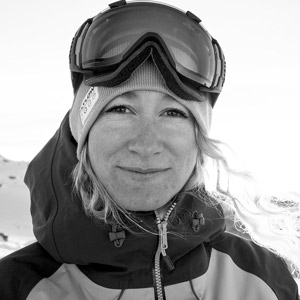
Cindi Grant
Location: Park City, UT
Top Gear Picks: Women's Revelator 154cm / V-Tail 160cm
Website: www.Backcountryliving.weebly.com
Instagram: @cindilougrant
Cindi is a professional splitboarder, mountain guide, writer, yoga teacher, and Wasatch native with a feverish passion for connecting with nature. As a young girl, Cindi Lou met her life partner Zach and dedicated her life to living fully through snowboarding. With a couple decades of backcountry experience and various guiding certifications her passion is to inspire others to experience a reconnection with the natural world. She resides in a ride in/out backcountry cabin, she and her husband Zach built. It is a simple shed roof home that is completely snowbound, has world class touring from the doorstep, a yoga studio, mountain spring water system, and is filled with natural light. When she is not at home, she loves splitboard expeditions and exploring remote mountain ranges.
Share this Post



